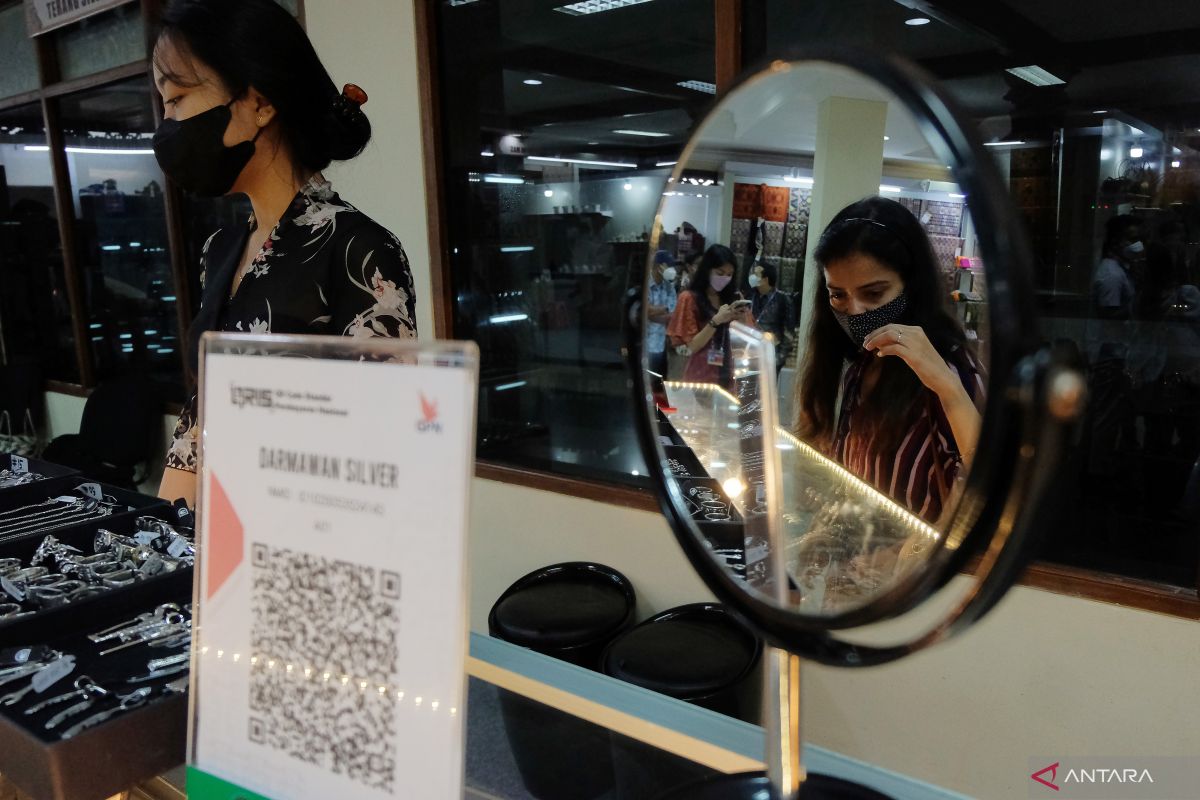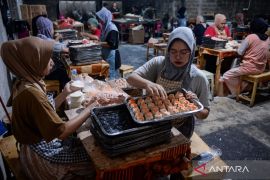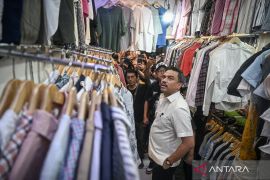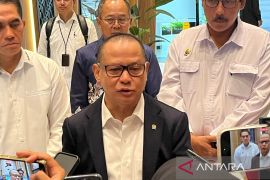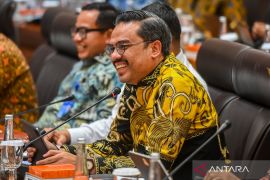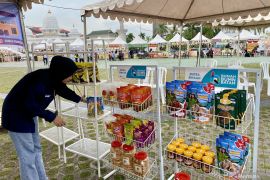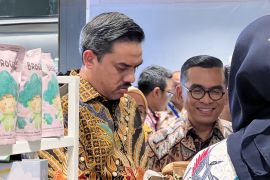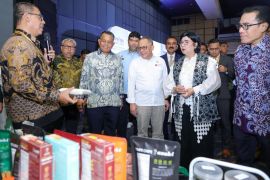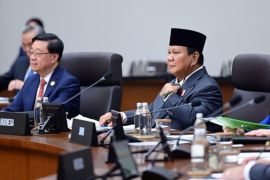After getting married and having two kids, she also started to sell complementary foods for infants (MPASI) to increase product variety and expand her business.
She also started to sell her products online to reach more buyers.
"We expanded to online sales to add more markets and facilitate transactions when the buyer is far away from us. However, for now, it is only through WhatsApp and Instagram," she said.
With the digital transformation, her consumers have become more and more diverse so her business’s income has increased threefold compared to before she took her products online.
In the past two years, the number of micro, small, and medium enterprises (MSMEs) that have migrated to online platforms has indeed increased.
According to the Ministry of Cooperatives and Small, Medium Enterprises (Kemenkop), at least 19 million MSMEs have entered the digital ecosystem, an increase of 130 percent, out of the targeted 30 million MSMEs the government is expecting to join digital platforms by 2024.
The COVID-19 pandemic has pushed MSMEs to utilize digital technology to adapt, transform, survive, and grow amid challenges. For that reason, digital transformation has become one of Kemenkop’s transformation agendas.
Although digital transformation continues to be promoted, there are still other transformation agendas that continue to be pursued by the ministry, namely the transformation from informal to formal businesses, the transformation of MSMEs into global and export chains and modern and digitalized corporations, and the creation of entrepreneurs who are new, established, innovative, sustainable, and create jobs.
Related news: Indonesia's digital market potential projected at $124 billion by 2025
Tresno, 46, is among the MSME players who have succeeded in penetrating global and export chains. The shoe craftsman took advantage of e-commerce platforms to market his products to buyers from various countries.
He said that in the two years of promoting his products globally, he has managed to find buyers in four export destinations—Malaysia, China, Japan, and the United States.
"We continue to try various innovations in product manufacturing to boost the interest of buyers from other countries," he remarked.
The various transformations carried out by MSMEs, either through the digital or global market, will undoubtedly strengthen their role in Indonesia's economy.
Indonesia currently has 64.2 million MSMEs, which contribute 60.51 percent to the gross domestic product (GDP), or Rp9,580 trillion.
Not only that, MSMEs also absorb 97 percent of the existing workforce and attract up to 60.4 percent of the total investment.
Related news: Govt encourages SMEs to go digital
Funding challenges
To enable a more significant transformation, MSMEs need funding, especially amid the ongoing COVID-19 pandemic.
Tresno said that sometimes he still faces problems when borrowing funds from banks for expanding his business, especially after entering the export market as now the demand for his homemade shoes can reach one thousand to two thousand pairs per month.
The MSME funding challenge has been highlighted by a recent study by cloud banking platform Mambu, which has reported that 55 percent, more than half, of Indonesian MSMEs were unable to obtain sufficient funding on at least one or more occasions in the past five years.
As a result, 57 percent of Indonesian MSMEs had to rely on loan capital from friends and family, while as many as 41 percent used personal funds to start their businesses.
Of the MSMEs that were unable to obtain sufficient business funds, 37 percent experienced cash flow difficulties, 37 percent were unable to launch new products or services, and 35 percent had trouble repaying loans to creditors.
Access to business funds turned out to be a significant obstacle for MSMEs. This seems to have happened because the business loan industry did not keep up with technological advances.
If lenders want to attract Indonesian MSMEs, they must modernize the lending process and adopt new technologies to provide loan solutions that are personalized, simple, and easily accessible.
With better digital loan services, the decision-making process and loan administration can be faster, and the funds can be disbursed immediately when business owners, especially MSMEs, really need them.
Therefore, financial institutions must be creative and make breakthroughs in resolving the complicated loan application process. The study revealed that the duration of the loan application process is the main factor influencing small business owners when choosing a lender.
Related news: State companies should assist local SMEs: Minister Thohir
Although low interest rates are the main consideration for 95 percent of MSMEs in the decision-making process, as many as 93 percent of MSMEs also want a fast loan application process, and 86 percent want a long repayment schedule.
To help finance MSMEs that are currently struggling, the government has provided various financing supports such as the people's business credit (KUR) program, productive aid for micro-enterprises (BPUM), non-KUR interest subsidy, and credit guarantees, among others, amid the pandemic.
All of the assistance is covered by the National Economic Recovery Program (PEN) at the MSME support post, with its realization reaching Rp121.2 trillion in 2020 and Rp83.19 trillion in 2021.
Credit guarantees are being provided by state-owned credit insurer PT Jaminan Kredit Indonesia (Jamkrindo), which realized a KUR guarantee of Rp82.62 trillion as of May 2022, an increase of 65 percent from the same period the previous year, with the number of guaranteed MSMEs reaching 1.84 million.
Meanwhile, for the guarantee of Working Capital Credit (KMK) for national economic recovery, since the program was launched in July 2020 until now, Jamkrindo, together with its subsidiary PT Penjaminan Jamkrindo Syariah (Jamsyar), has recorded a credit guarantee of Rp26.32 trillion.
Related news: President urges SMEs to tap potential of digital economy
Editor: Suharto
Copyright © ANTARA 2022
